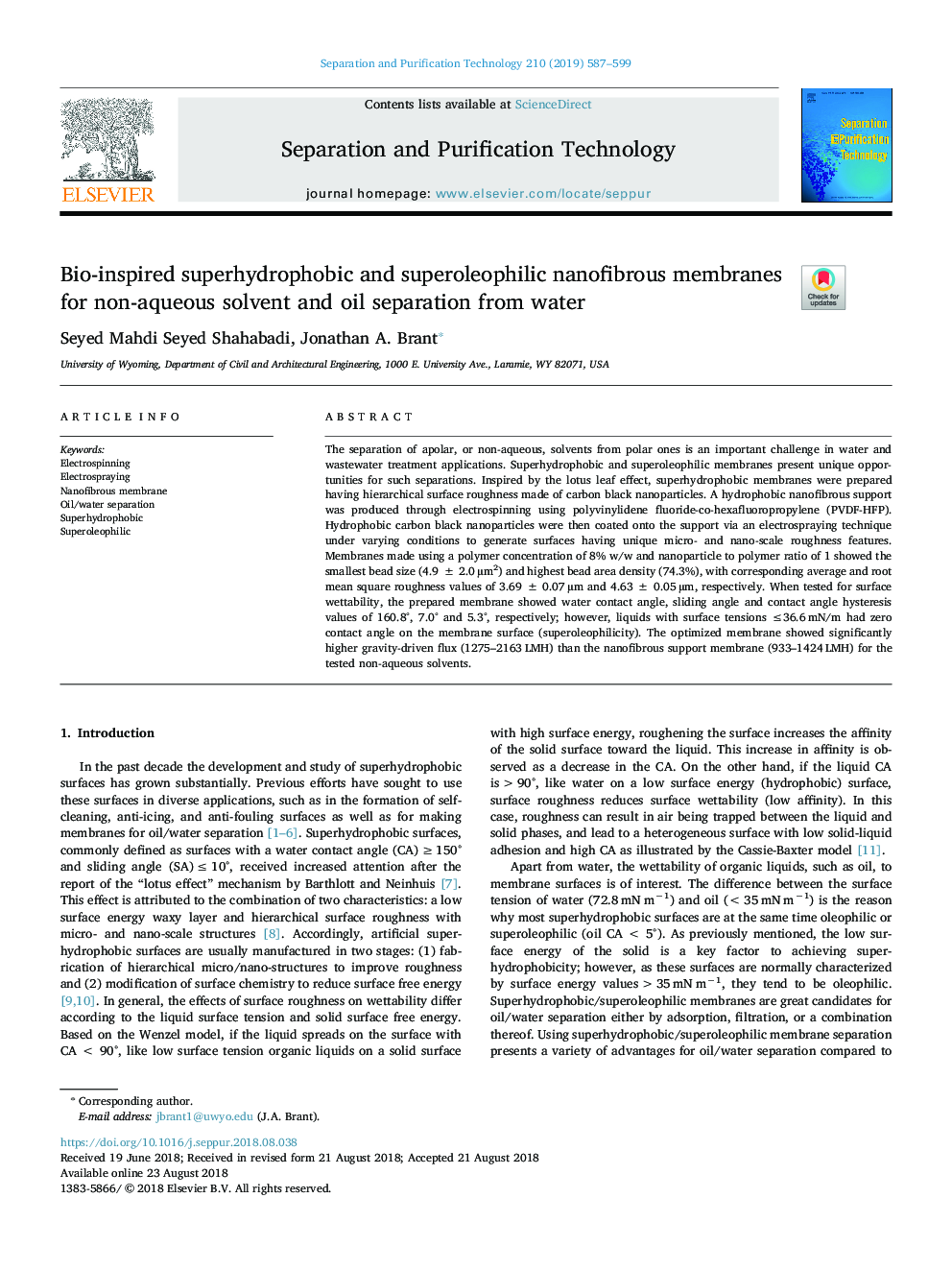| Article ID | Journal | Published Year | Pages | File Type |
|---|---|---|---|---|
| 11003291 | Separation and Purification Technology | 2019 | 13 Pages |
Abstract
The separation of apolar, or non-aqueous, solvents from polar ones is an important challenge in water and wastewater treatment applications. Superhydrophobic and superoleophilic membranes present unique opportunities for such separations. Inspired by the lotus leaf effect, superhydrophobic membranes were prepared having hierarchical surface roughness made of carbon black nanoparticles. A hydrophobic nanofibrous support was produced through electrospinning using polyvinylidene fluoride-co-hexafluoropropylene (PVDF-HFP). Hydrophobic carbon black nanoparticles were then coated onto the support via an electrospraying technique under varying conditions to generate surfaces having unique micro- and nano-scale roughness features. Membranes made using a polymer concentration of 8% w/w and nanoparticle to polymer ratio of 1 showed the smallest bead size (4.9â¯Â±â¯2.0â¯Âµm2) and highest bead area density (74.3%), with corresponding average and root mean square roughness values of 3.69â¯Â±â¯0.07â¯Âµm and 4.63â¯Â±â¯0.05â¯Âµm, respectively. When tested for surface wettability, the prepared membrane showed water contact angle, sliding angle and contact angle hysteresis values of 160.8°, 7.0° and 5.3°, respectively; however, liquids with surface tensions â¤36.6â¯mN/m had zero contact angle on the membrane surface (superoleophilicity). The optimized membrane showed significantly higher gravity-driven flux (1275-2163â¯LMH) than the nanofibrous support membrane (933-1424â¯LMH) for the tested non-aqueous solvents.
Keywords
Related Topics
Physical Sciences and Engineering
Chemical Engineering
Filtration and Separation
Authors
Seyed Mahdi Seyed Shahabadi, Jonathan A. Brant,
